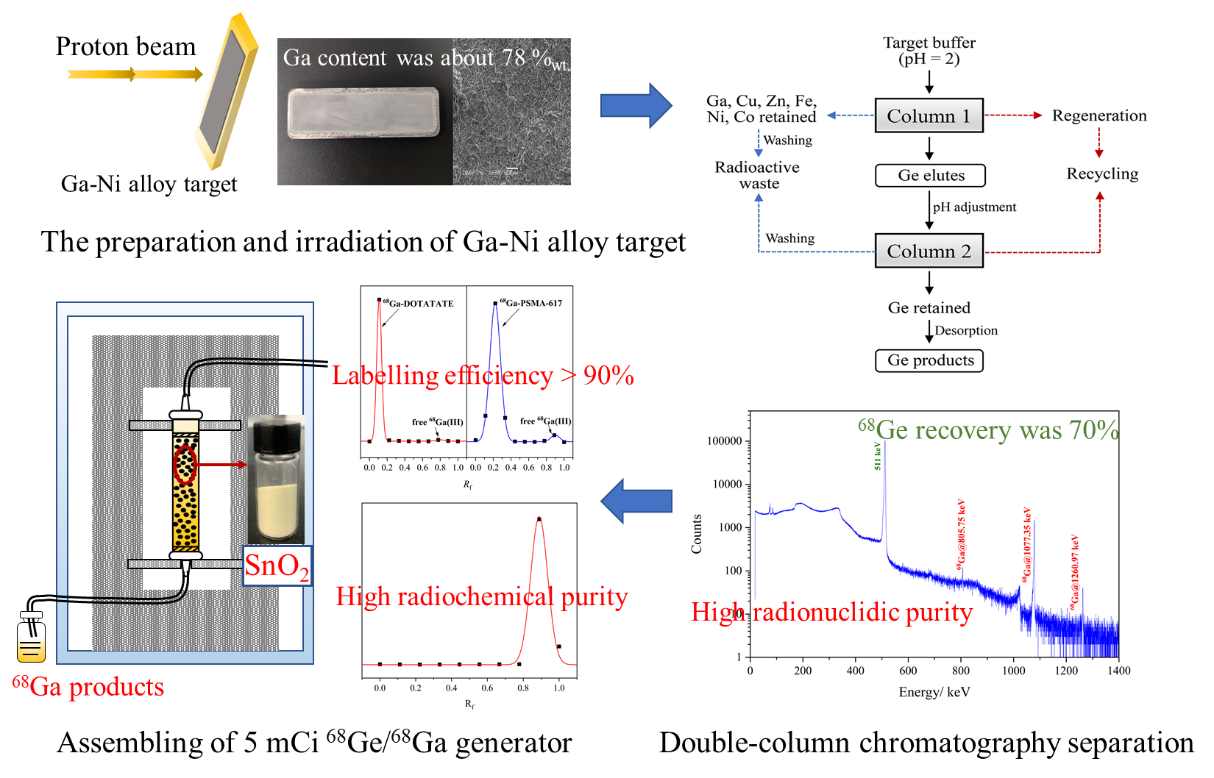Study Lays Foundation for Producing Germanium-68/gallium-68 Generator
Researchers at the Institute of Modern Physics (IMP) of the Chinese Academy of Sciences (CAS) have conducted a study on the separation route of germanium-68 and successfully prepared the germanium-68/gallium-68 generator.
Published in the journal of Applied Radiation and Isotopes, the study laid a good foundation for producing the generator-based medical isotope gallium-68 in China.
Positron Emission Computed Tomography (PET) is one of the advanced imaging techniques used in the clinical field of nuclear medicine. The medical isotope fluorine-18 has been widely used in PET for detection of cancer. Usually, fluorine-18 was produced by onsite cyclotron in hospitals.
As the application of gallium-68 in nuclear medicine is growing quickly on a global scale, obtaining gallium-68 directly from the germanium-68/gallium-68 generator has received much attention. More importantly, the generator could be used for a long time because of the long half-life period (about 271 days) of the mother nuclide germanium-68.
The quantity and purity of germanium-68 is of great importance in producing gallium-68. In this study, the researchers from IMP reported an efficient method to produce and separate germanium-68. They prepared the Ga-Ni alloy target with large area by electroplating. And the content of gallium-68 in the Ga-Ni layer could attain 78% by weight. The Ga-Ni target was bombarded using a proton beam for 10 hours. After “cooling” for a long period, the researchers applied an automated system equipped with double-column chromatography to separate germanium-68 with recovery of about 70%.
Then the researchers used separated germanium-68 to assemble the SnO2 germanium-68/gallium-68 generator. They collected gallium-68 in about 70% yields with high radioactive concentration. In addition, the eluted gallium-68 has a radionuclidic purity of > 99.9% and a radiochemical purity of > 99%, which satisfies the requirement of European Pharmacopeia.
The techniques presented in this study are expected to be applied in production of germanium-68/gallium-68 generators in scale, facilitating the development of gallium-68 radiopharmaceuticals in China.
This work was financially supported by the National Natural Science Foundation of China and Technology and development of Gansu Province (Isotope laboratory, Gansu Province).
DOI: https://doi.org/10.1016/j.apradiso.2022.110599

Figure 1. The preparation technique of the germanium-68/gallium-68 generator. (Image by WANG Jieru and QIN Zhi)
Contact :
LIU Fang
Institute of Modern Physics
Email: fangliu@impcas.ac.cn
Contact Information
Institute of Modern Physics
Email: fangliu@impcas.ac,cn


 甘公网安备 62010202000713号
甘公网安备 62010202000713号


